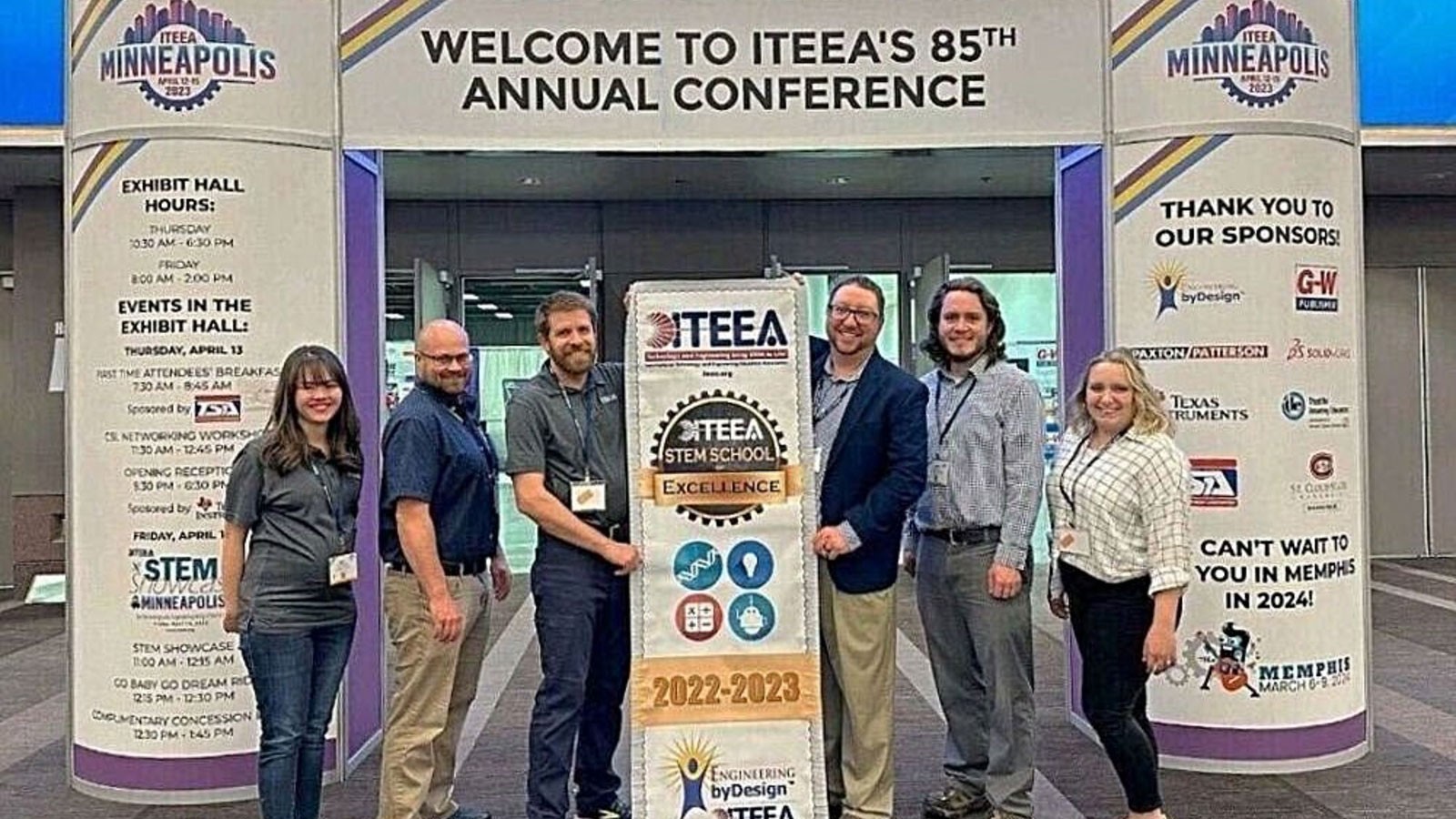USU Recognized for Excellence in STEM Teaching, Learning
By Shelby Ruud Jarman |
Utah State University was recently recognized as a leader in STEM education by the International Technology and Engineering Educators Association as a University STEM School of Excellence. The award recognizes schools whose teachers, administrators and other stakeholders are providing meaningful STEM education experiences for students and communities.
Though the award was given to Utah State University as a whole, programs in USU’s College of Agriculture and Applied Sciences (CAAS) were specifically noted for the ways they focus on applying science and mathematics through technology and engineering to solve real-world problems.
STEM subjects are often taught in silos, which can make it difficult to see the relationships between STEM subjects, according to Trevor Robinson, professional practice assistant professor in the Department of Technology, Design and Technical Education.
“At USU, we try to incorporate all of the subject areas into our courses,” Robinson said. “We focus heavily on hands-on, real-world projects and problems. Students may design, build and program a robot. This type of project draws on skills and knowledge from technology, math, science and engineering simultaneously, allowing the students to gain a better understanding of the subjects.”
According to Robinson, the faculty in the College of Agriculture and Applied Sciences incorporate as much integrative STEM into their courses as possible.
“Students who pursue STEM degrees at USU and specifically within the College of Agriculture and Applied Sciences find a strong focus on real-world, concrete applications that actually matter to our society, our economy and our environment, and therefore make a real impact on people,” said Joseph Furse, assistant professor and program lead of the technology and engineering education degree program.
An example of this integrative approach to STEM in action is the aquaponics class taken by technology and engineering education students. Aquaponic systems produce food without soil, usually with a combination of aquaculture modules for raising fish and horticulture modules for growing fruits and vegetables. Students learn about sustainable agricultural systems and then apply their knowledge to construct a fully functioning aquaponic system. This year, the students are designing and constructing a small-sized aquaponics unit for Windridge Elementary School in Davis County to help their students there learn about biology and agriculture.
Another example of gaining real-world STEM skills comes from the technology systems degree program. These students develop drafting skills in CAD/CAM, materials processing, additive manufacturing (aka 3D printing) and woods-based manufacturing to develop and manufacture a marketable product. Many of these students then take their skills and apply them in industry internships.
The award required a vigorous application process led by Furse and Robinson. They were tasked with demonstrating how USU is sharing STEM knowledge not just with students, but also with communities. Furse noted that if there had been space enough on the application, they could have highlighted a majority of the departments and programs in CAAS at USU’s campuses statewide.
“While our teaching and research were very strong areas, I believe the area that sets us apart from many of the other institutions is our land-grant mission and the community engagement and outreach which brings that to the broader community outside the confines of the university,” Furse said.
CAAS students and faculty members alike are eager to share their passion for STEM with communities statewide. Students from the USU chapter of the Technology and Engineering Education Collegiate Association recently hosted a robotics competition for 25 high school and middle school robotics teams. Faculty members have provided training and equipment to elementary and secondary school teachers across the state to use drones in teaching students about food, agriculture, natural resources, and human sciences in the classroom. Faculty and staff were recently at the Northern Utah STEM Expo to help educate middle and high school students about careers in STEM through interactive activities and a panel discussion.
“STEM education is vital to the continued success of Utah and the United States,” Robinson said. “A workforce that lacks a working knowledge of the relationships among STEM subjects through an integrative STEM education will not be nearly as successful as one that understands and utilizes that knowledge.”
To learn more about the USU College of Agriculture and Applied Sciences, visit https://caas.usu.edu.
#####
WRITER
Shelby Ruud Jarman
Writer
College of Agriculture and Applied Sciences
208-705-2282
shelby.ruud@usu.edu
CONTACT
Trevor Robinson
Assistant Professor in the Aviation and Technical Education
School of Applied Sciences and Education
(435) 919-1231
trevor.robinson@usu.edu
Joseph Furse
Assistant Professor
Applied Sciences, Technology & Education
joseph.furse@usu.edu
TOPICS
Awards 698stories Education 332stories STEM 163stories Teaching 152storiesComments and questions regarding this article may be directed to the contact person listed on this page.







